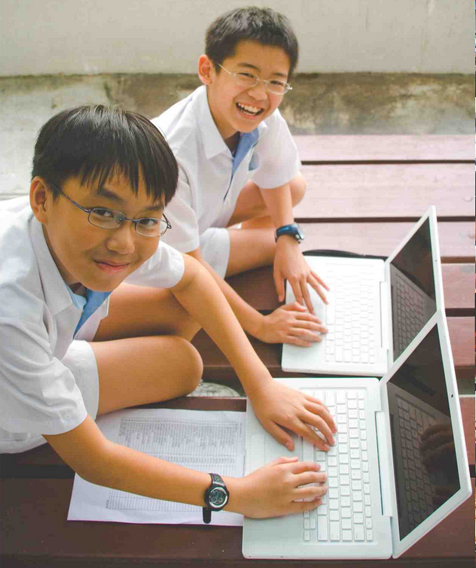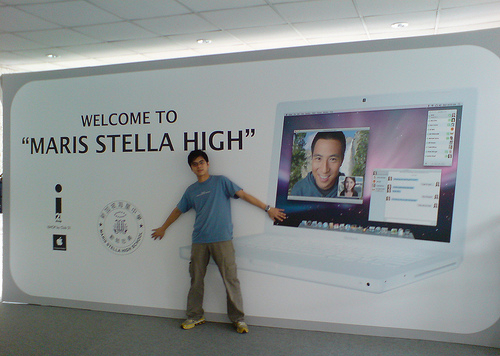
For the past few years, my school (Maris Stella High School), has been embracing Apple technology for teaching and learning. Over this period, we have partnered with Apple for the development of many teaching packages based on the Mac OS.
A week ago, I’ve received a word from Mr Paul Leong (my school’s HOD of ICT) that Maris Stella will be featured on the official Apple.com website in late January regarding my school’s active use of Apple technology.
Today, I will share with you guys how is Apple technology widely used in Maris Stella.
Launched in 2008, the “Future Maris Stella @SG” is an ICT-enabled learning environment that aims to ameliorate student engagement in learning, thus achieving a higher quality of academic excellence. The objective of this program is to leverage on a 1:1 learning approach to education that provides students with the maximum opportunity to access resources to learning and to also improve on the quality of teaching and learning through a computer-supported collaborative learning approach. Students and teachers have 24-hour-a-day, 7-day-a-week access to a notebook computer as well as digital content, educational software, and digital authoring tools.
Every student is required to purchase a Macbook (runs on Snow Leopard) and has to bring it to school daily. Teachers or lecturers also carry their own Macbook whereby they will use it together with students during lessons. Most of the school syllabus revolves around doing project work on the Macbook, which comes complete with a pre-installed Microsoft Office 2008 for Mac, iLife, iWork, and a 4-year warranty. Sounds cool right?
In an effort to discourage students from accessing social networking websites such as Facebook or Twitter during lessons, our school has put in place some precautions. For example, every student has a unique username and password to the school’s wireless network. Hence, the school authorities can track down who visited what websites. Students may think that they can sneak their way through by plugging in a wireless USB into their Macbook but the school harnesses a system that blocks such wireless signals within the school compound.
Guess what — even our ICT infrastructure adopts Apple technology too. Powered by Apple’s Quad Xeon 64-bit Xserve, these servers help to run the school’s e-learning portal studywiz.marisstella.net. Meanwhile, the Apple Air Port Extreme (with built-in WPA2 Enterprise and RADIUS Server — non-Apple products) ensure students are able to surf the Internet on their Macbook via wireless.

Apparently, my school principal is an Apple fanboy. Instead of using laptops powered by Microsoft Windows, he chose Mac as a educational tool. Here are some reasons why?
1. Cram more. Crash less.
Only a Mac has an operating system, hardware, and software built by the same people. So everything works together seamlessly and reliably, with much less crashing.
2. Intelligent design.
The Apple design says everything. Careful planning makes the Mac the most superlative computer in every dimension.
3. Almost virus free.
Mac OS X is built on a rock-solid UNIX foundation with security features that don’t come with PCs, minimizing the risk of viruses.
If students encounter any hardware or software problems with their Macbooks, they can easily approach the on-site Apple service support staff at Maris Stella Service Center. Apple engineers and trainers will also provide a one-day intensive ICT training on its iLife suite, various collaboration tools and applications to the students.
